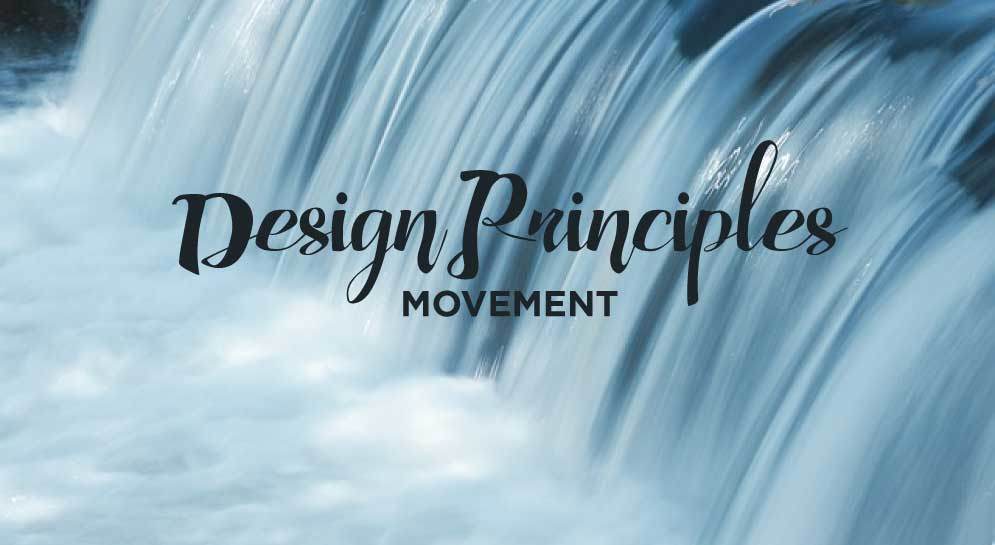Some links in this post are affiliate links, meaning that if you click and buy something from the site, I may get a small commission (at no additional cost to you).
When you think of movement, what do you think of? A prowling lion? A racing cheetah? Dancers sashaying around the dance floor? Usually when we think about movement, our thoughts lean towards towards biological creatures – not inanimate objects.
More...
Well, let me introduce you to another principle of design: movement.
What is movement in design?
Before you dismiss me, let me explain what graphic designers mean when they talk about movement in art. And no, it does not refer to a relocating a piece of art to another room. Rather, movement is what an artist uses to guide a viewer's eye in, through, and out of a composition (UTexas). Movement is the path a viewer's eye takes through a composition. In an image, the kinds of lines, shapes, and forms an artist uses can affect this movement.
In the last blog post, we also discussed how heavily emphasis in visual hierarchy guides the movement of an eye throughout a composition. This is just one example of how movement is used in a composition.
Another example of movement is the elements of design that are used. When we discussed lines, we talked about how diagonal lines innately possess their own movement. They suggest this in what they cause us to think about.
For example, a curved line frequently evokes images of a dancer.
A diagonal line suggests a sprinter ready to burst forward in an explosion of speed.
Examples of movement in art
These woodblock prints by Katsushika Hokusai are excellent examples of line and movement and how this principle of movement is used within a composition. Take note of where your eye immediately goes when viewing these pieces of art.
In The Great Wave your eye begins at the left and is carried to the right by the movement and curves of the crashing wave.
When the wave is followed to its natural end point, the eye is led to Mt. Fuji in the background which you may not have seen until your eye was led there.
In Red Fuji the curved lines of the sides of the mountain carry your eyes to the volcanic peak.
For graphic designers, this has significant implications. When used properly, movement in design ultimately guides viewers through a composition to where the designer wants them to go. Put succinctly, designers use design elements to guide viewers to the call to action. Put bluntly, design — done correctly — makes your cash register ring.
Designers use design elements to guide viewers to the call to action
What do you think? Please share of any examples you can think of when movement clearly guided your eye through a composition.
Does your company need to effectively guide your audience to your calls to action? Work with us! We would love to help you improve your visual communication — and your bottom line.
And if you are a business owner or entrepreneur who wants to learn graphic design yourself, then the course below is just the thing. In Attract + Transform, I teach you the skills and resources you need to know to attract your audience and transform your company.




Rhythm is a principle of design that suggests movement or action. Rhythm is usually achieved through repetition of lines, shapes, colors, and more. It creates a visual tempo in artworks and provides a path for the viewer s eye to follow.
You are absolutely correct! I would classify rhythm as kind of a subcategory of movement because rhythm does itself create movement. This is definitely an area where I could elaborate some more. Thanks for your input!